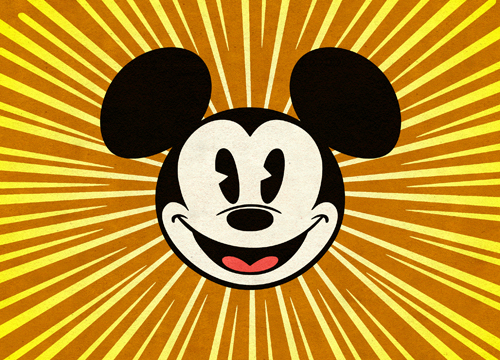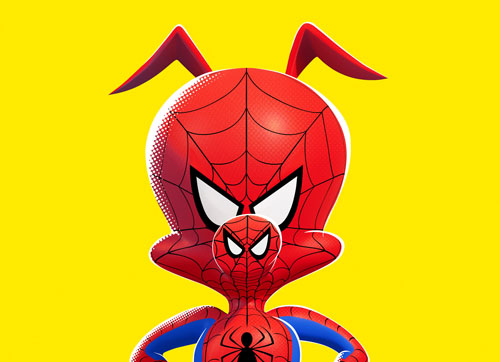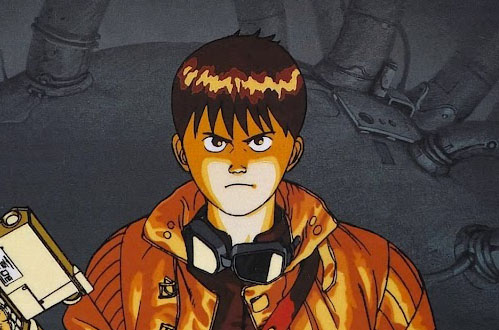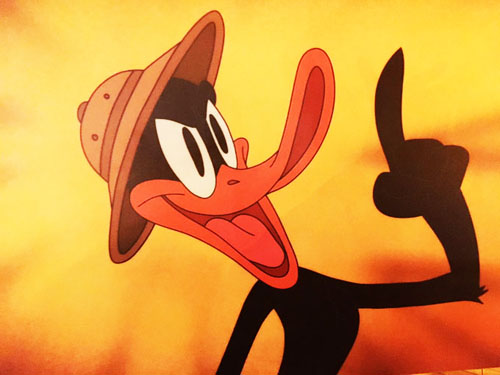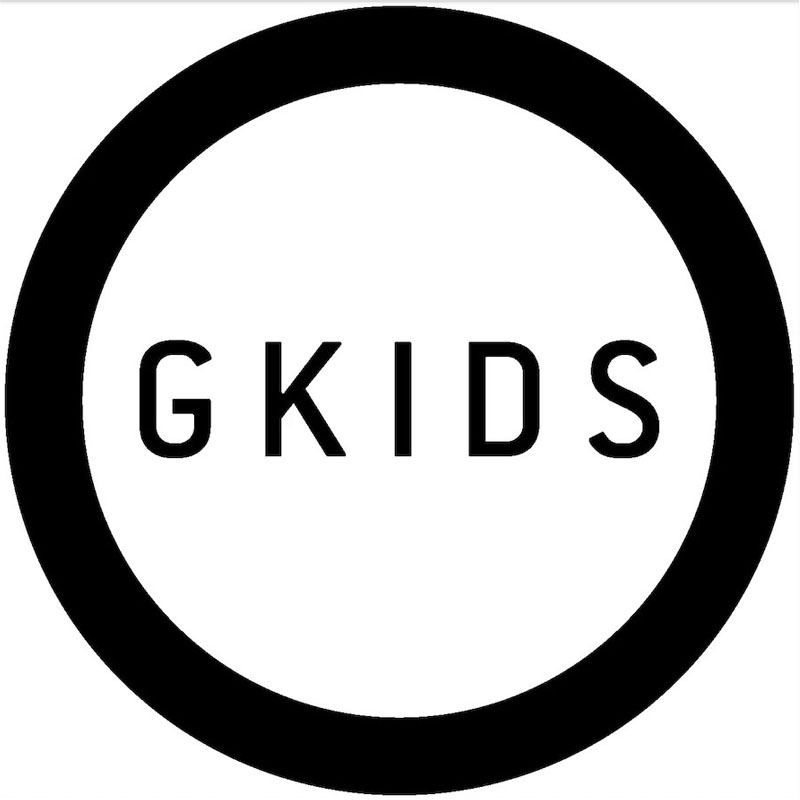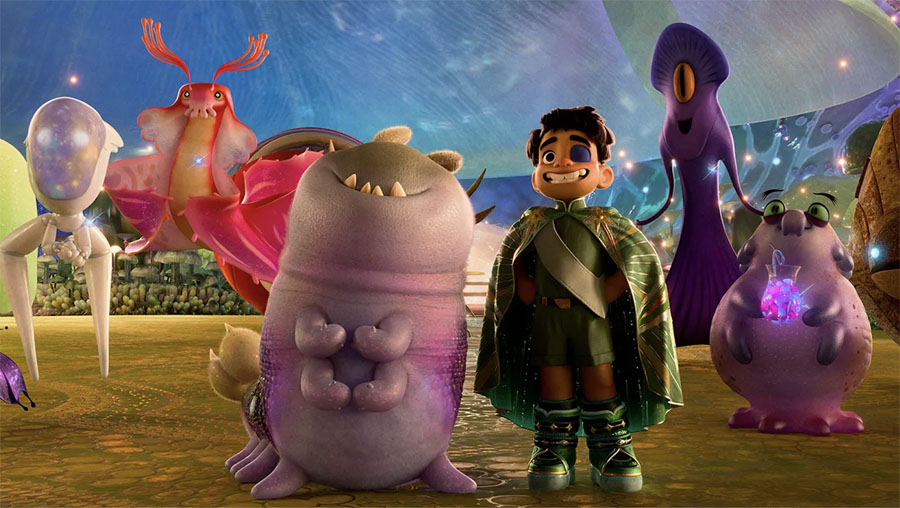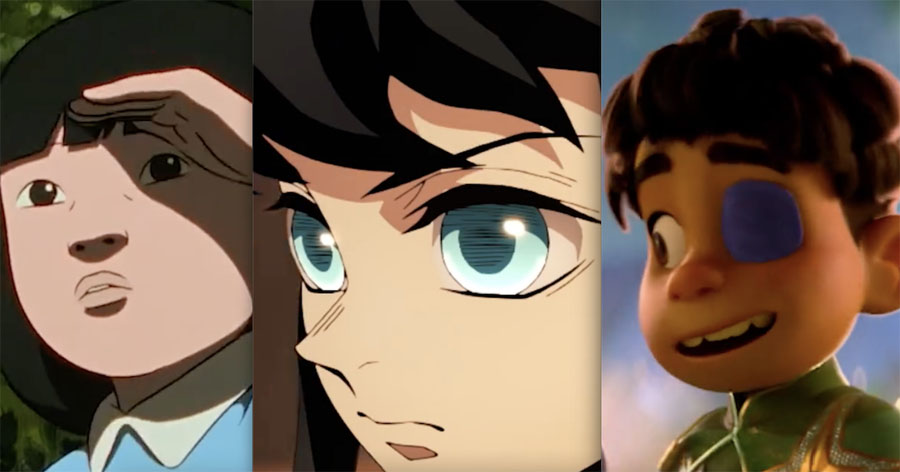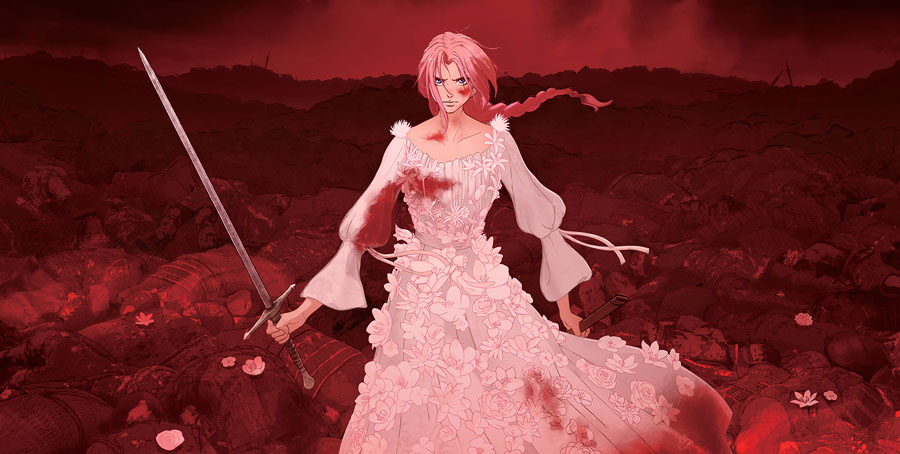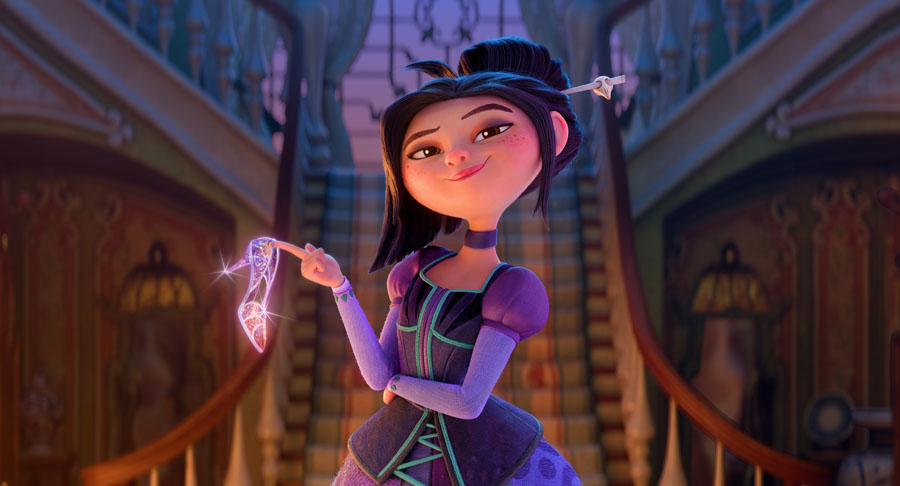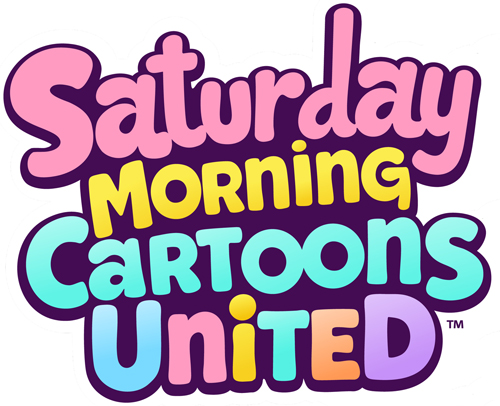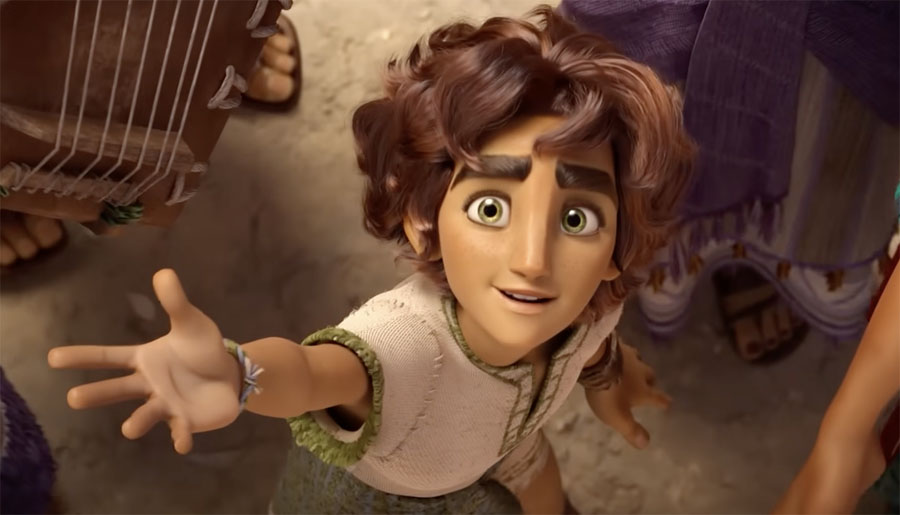My Year of Dicks is one of the 15 finalists for the 2023 Best Animated Short Film Oscar. Director Sara Gunnarsdottir, writer Pamela Ribon and producer Jeanette Jeanenne present a memorable year in the life of a teen girl, who goes through some personal ups and downs, learning what it truly means to have a strong romantic relationship and an even stronger friendship. Here’s my Animation Scoop Q&A with the team. (This interview was conducted as an Email Q&A and was edited for length and clarity.)
Jackson Murphy: This is adapted from a memoir. It’s set in 1991. How did you discover that animation could be the best way to share these memories and tell this story in a visually interesting and, at the same time, personal way?
Pamela Ribon: Having worked in the incredibly large and corporate culture of big-studio animated films, I wanted to find a more personal, independent route to help lead an animation pipeline. When the opportunity arrived to adapt my “mortifying memoir” Notes to Boys (and Other Things I Shouldn’t Share in Public) for animation, it was an overwhelming concept at first. The memoir has adult me talking about a younger me who was writing all these lengthy notes to crushes… and then often calling up those very crushes on the phone and reading the letters to them. (I told you it was mortifying.)
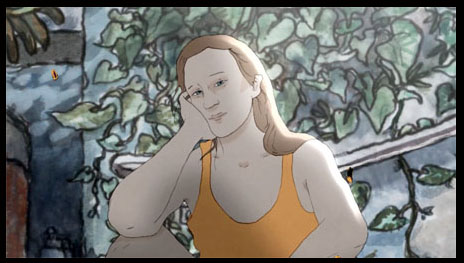
Pamela Ribon: Megan Reid and John Agbaje encouraged me to use animation to let the teenage fantasies not just illustrate my flights of fancy, but immerse the viewer in a place and time. I was also interested in making an animated comedy that didn’t emulate a multi-cam sitcom. I was well aware that this was a rare chance to make something extremely unique.
I started with a more faithful adaptation of the memoir, trying to handle two different timelines of my life. But I felt like any version of an older me, even in a voiceover, made it seem like the teenage protagonist was either already past this point her life via an adult narrator making emotional conclusions, or was positioned with less agency, was merely walking through a story that will happen to her, which makes her an easy target for mockery and judgment.
Once I knew I had to – literally – get out of my own way, I remember thinking, “Oh, I’ll do just one chapter from the book. And that chapter is: ‘My Year of Dicks.’” Animation lets this story be both playful and sincere. There’s no looking back in this moment for the characters, allowing a viewer to be the one who might experience nostalgia, but that knowledge isn’t required to understand and experience the narrative.
JM: What did breaking the story into five parts allow you to do in terms of an arc?
PR: Once we landed on the idea for each boy representing a genre and that genre represented a time in life when you “try on” a personality and all that comes with it, breaking the story into five distinct chapters made it possible to fully encompass an entire language and then drop it as Pam continues her mission.
Sara Gunnarsdottir: This approach to having a certain genre represent each chapter made it fun and easy to develop a strong visual aesthetic for each one. Not only in terms of animation style, but also colors, layout, music and just general tone/mood. It makes the film stronger as a whole, that each chapter has such a strong identity to itself.
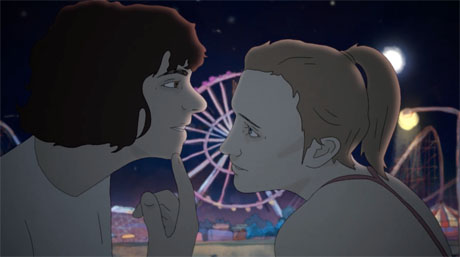
JM: Which section was the most challenging to animate?
SG: We were seven animators working on bringing this story to life. I loved being able to give all of them some parts of the story where they could really put their mark on it with their personal way of approaching animation. I can imagine that the shots they were given as “theirs” might have been the most challenging ones since those are the shots we are really using the medium to push the cinematic language in a way only animation can.
JM: How did you want to present the theme of expectations vs. reality, through the different relationships?
SG: I think Pam already set it up so nicely in the writing. Her teenage self has these strong ideas of what she is after, a romance through the lens of movie genres. She falls for a certain image/stereotype she sees in each boy, only to find out that they are painfully “normal” and flawed like the rest of us.
Each movie genre offered different ideas and inspirations in how we could visualize her expectations and set them on top / or alongside the reality she is in.
In the vampire it was color that really helped set a tone for the genre along with rich backgrounds for a bit of a Victorian mood. Otherwise in this first chapter we aren’t mixing real life and her fantasies too much, when we do, it’s subtle and perhaps a little poetic. The vampire genre is such a big fantasy world and we’re setting the tone here for how we’re going to dive in with Pam. So in this first chapter, when we are looking at Pam’s expectations, it mostly takes over the whole screen accompanied by the voiceover that is her inner voice in a simpler way.
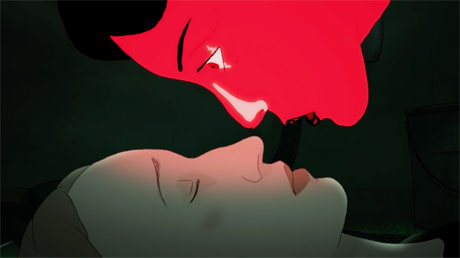
SG: For “Un Gros Penis”, the arthouse chapter, we were looking at directors like [Jean-Luc] Godard and David Lynch for ideas and inspirations. Straight away I thought extreme close-ups would be essential here and that’s how we started off this chapter and then kept revisiting Pam’s face, and eyes especially, throughout. It made sense that her eyes were featured as a doorway to her inner self and then we also kept going through literal doors between one space to the next in this chapter, like they do in the film being featured at the cinema: The Cook, the Thief, His Wife and Her Lover. I was so happy to play with the beautiful color palette from that film. The cinema in Pam’s story has three stage-like setups; the closet, the theater and the lobby in addition to the outside. It matched the kitchen, the dining room and the bathroom for The Cook The Thief… That was thrilling to me. Green, red white and blue. Then Josh Shaffner came in as the artist handling Pam’s fantasy and at one point it was maybe supposed to be in black and white but Josh’s work comes in deep vibrant colors and he brought the beautiful red and blue to it which was perfect. The way that came together in the closet with the green backdrop and Pam’s expectations gleaming on top in red and blue makes me very happy.
For the anime in “The Sweet One” we went back to allowing the style to take over the whole screen for a lot of it and immerse not just Pam but the whole of it in the overly sweet, simple, candied color anime. Pam in full force. But then in the second half of this chapter we break it up as we get a chance to show that Sam is unique. He witnesses her overactive fantasies while standing outside of it, and like us, sees her the way we do. I think it makes us realize his importance in a subconscious, sneaky way and really sets us up for the ending.
The horror genre was so fun to work with because it offered great opportunities for comedy as well. It was Pam’s idea to use the split screen in this context, referring to films like Carrie. It was perfect as we were already splitting the image up in some way between Pam on the floor with the Nazi and the horror film playing on the TV screen and it wound up being a perfect theme here. And then allowing the animation to get wonky and almost grotesque brought such a playful tone to the dark genre.
Then when we go back to Sam at the end and Pam’s expectations kick in as she is about to turn it into a flourishing, rose colored fantasy, he stops her. He takes her out of her head and into his bedroom, which for us, is a romantic, rose colored fantasy.
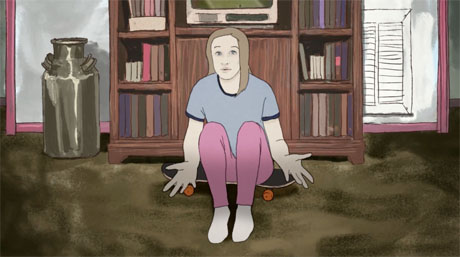
JM: What were your goals in showing the theme of having strong, supportive friends and friendships?
PR: I moved a lot growing up; high school was my twelfth school since kindergarten. Instead of maturing with the same kids every year, by the time I was a teenager I was the kind of person who would be on the fringe of groups, and never a clique. It can get lonely. But once I found the fringe of the fringe, when I got my group of weirdos (first with the “new wavers/mods/alternatives” and then with the theatre kids), that’s when I really connected with people who were unafraid to speak out, look different, challenge a status quo. Latchkey generation kids know that your found family was how you learned most things, for better or worse. We were all underparented in a kind of chaotic atmosphere, and this was a way to show how innocent we were as we tried to figure it all out.
JM: There are several situations (a break-up at a theme park, discovering a crush, a party that isn’t quite your vibe) that today’s teens will be able to relate to. How do you hope “My Year of Dicks” will connect with this generation of teenagers?
SG: Even though the culture of youth now might be very different from the 80’s and the 90’s, the milestones, the drama and the emotional highs and lows are the same. I believe everyone that either is a teenager now or ever has been can relate to this film.
JM: You’ve had quite the year, with SXSW and Annecy among other screenings and honors. What have been some of the highlights of this entire experience?
SG: Of course it feels really nice to get acknowledged for the hard work you’ve done. Perhaps the highlight has also been the fruitful ongoing partnership during the festival run between me, Pamela and Jeanette.
JM: How would you feel about being Oscar nominees for this short?
SG, PR and Jeanette Jeanenne: Perhaps because it was made with so many of the stories we are told not to talk about, but this all still feels like it’s bigger than anything we could have expected. Maybe because historically we’ve not seen a reason to expect a film like this to reach so many people. We are humbled and thrilled to share stories about transitions and the search for identity, compassion, and love — to shine a light on the importance of innocence and autonomy.
